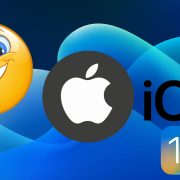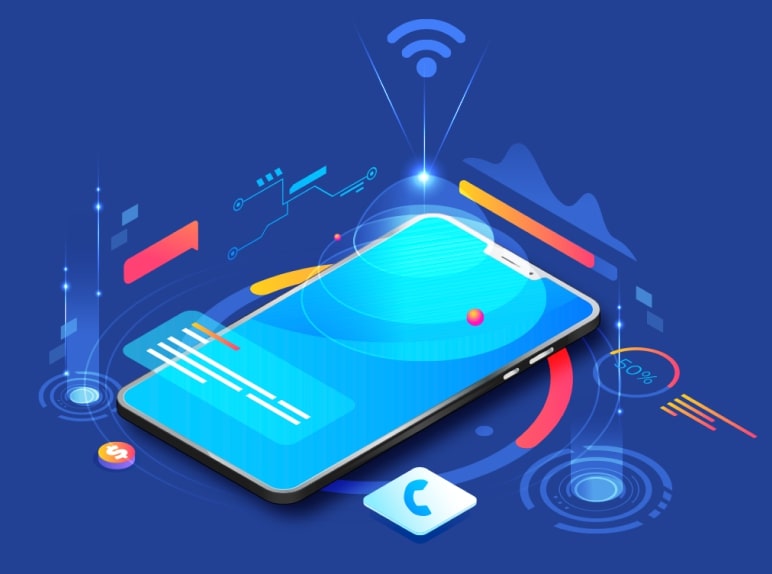Find out how to launch your first mobile app development in just 9 steps by exploring our comprehensive guide on the steps of making an app development.
When you awake each day and have a fantastic plan for your mobile applicationYou can talk about the idea, but you are aware that it’s the best idea you’ve ever had and you’re sure the app you’ve created will captivate the world. What happens do you do next?
The good news is that it’s an excellent beginning. However, the downside it’s that only a few apps succeed. So, what is the difference between the good and the bad? A little luck? Yes, and lots of the right steps. Although you may get lucky, we’re giving you the proper steps to develop your application.
If you’re considering developing a mobile application let’s look over our comprehensive guide to mobile app development. To make it easy for you, we’ve broken down the entire process of developing mobile apps process into nine steps.
The Main Stages Of The App Development Process
1. Confirming The Concept
Before you decide to proceed, you must take the time to ensure you’re not bringing together an idea that isn’t right and that the idea merits time and effort.
App Objective: What is the reason you need to create a mobile app? Do you need it in your business? Does your idea make sense or is it an ideal fit for the needs of your target audience/company? Do you have the necessary resources to spread the word?
Target Audience: Who is your target group? Who are your potential customers?
Application USP: What are its essential aspects? What is the primary purpose of your app? What are the reasons why your users should make use of your app? How can you distinguish yourself?
Analyzing Competitors: What are your competitors? Do they have an application similar to yours? If so, do you have a solution more effective than the other solution?
App Investment: Every app development project will require investment, time, and time from you. Are you prepared?
App Marketing: What time and how do you promote your app? What’s your marketing strategy at the beginning for your first 500 clients?
Step 2. Market Research
This is the right moment to complete the most crucial part of your way. Market research will reveal the actual demand or desire of the market consequently, you can alter your ideas as well as the research will provide a detailed set of requirements to assist you in prioritizing your tasks. The question here is, you, use what is the best way to conduct market research correctly? Follow the step-by-step market research method here:
Here are some additional benefits when conducting market research
- It will help you maintain an understanding of your customers.
- Have a clear understanding of your competition
- It helps you evaluate your product’s quality before its launch
- Can help you decide what you need to do to reach your target audience?
- Recognize the business opportunities
- Have a chance to explore the features and requirements of the customer
Step 3: Create the Wireframe for your app
When your list of ideas is completed, it’s time to give shape to your concept Wireframes. Wireframes can be thought of as a diagram of your app. It shows the style of your application and its functionality. Additionally, it will aid you in understanding the appearance and function of the app.
The main purpose of the hep wireframe is to give clarity to the theories that the team can follow. It also assists developers to refer to it as a reference, or it can be described as a guidebook.
If you’re looking for suggestions on creating your app’s wireframe Here are some suggestions
Draw Out The User Flow,
In the beginning, the flow map for users is vital as these steps are an essential component for your app’s ability to meet a certain objective. I’m sure you’d like to understand every step, right? Let’s go over them:
Make the Mobile Frame
It is recommended to choose frames that are the same dimensions as the device you are designing. First of all, the frame must serve as a natural limiter and can stop the possibility of adding multiple elements on one screen. Additionally, the frame should create the illusion of a frame layout.
We recommend beginning with a mid-screen device. For instance, as an iOS company for app development, We employ the XS framework on the iPhone.
Utilize Design Patterns
The most crucial element in UX design. If users can see similar User Interface elements in a new product, they can use their previous experiences while using the new product. The two platforms iOS and Android come with native design patterns which can make it easier to design process the of creating an experience that is familiar to designers. Design patterns can be used as a reusable content block it is possible to utilize to address common issues.
Ensure Your Content Scales Well
Does your design for the screen be a hit when you use your iPhone XS? That’s great! It will look amazing regardless of screen size. If your design appears amazing on a mid-sized phone screen, such as the iPhone XS, it doesn’t necessarily mean that iPhone 5 and iPhone XS Max users will get an identical experience. While it’s fine to start with the middle screen size when you are wireframing, it’s also crucial to see the quality of your content on different screen sizes and then adjust it to the screen size.
If you’re in search of assistance to create your mobile app’s wireframe, go through the most popular wireframe tools:
- InVision: InVision brings screens to life in the form of Prototype or Mirror Studio documents, and much more. The entire experience is accessible at any time, anytime.
- UXPin: UXPin Mirror makes previewing your prototypes on actual devices quick and simple. It only takes a few taps to ensure that mobile prototypes appear and work in the way you wanted by watching them in real time on real devices.
- Balsamiq: Balsamiq Wireframes allows users to edit, create and share high-quality sketch wireframes in the context of Drive along with G Suite. G Suite apps (Docs, Sheets, Slides).
- Fluid UI: Fluid UI Player will be the complimentary companion app to Fluid UI. Download the Player to see stunning full-screen mockups made using the help of your FluidUI.com account. You simply scan the QR code that is available within the FluidUI.com project preview. Iterating design concepts for apps has never been simpler or more efficient.
- Proto.io: Proto.io create fully-interactive high-fidelity prototypes that appear and function exactly just as your app would. No coding is required.
- JustinMind: It is the Justinmind application is an application for viewing prototypes of Justinmind prototypes, which can be used offline. Prototypes can be imported into your Justinmind account and then viewed locally.
- Prott: It is a tool for prototyping that takes your idea from the initial draft to an engaging prototype that performs as a real application within a matter of seconds. With a simple interface and collaborative capabilities, Prott is the ideal tool for communication and design for those who are interested in working more effectively, at any time and anywhere.
- Figma: Figma Mirror allows users to view their designs through the Figma desktop application live on each of their Android devices.
Bring Order to The Design Chaos by using Design Sprints
While wireframing, you’ll be confused as to whether you make the correct design choices or not. Perhaps one layout IOS is better than the other or maybe some particular feature needs to be added. Design Sprints Design Sprint is a proven scientific method of collective brainstorming that aids in determining the features that should be built first, and which ones to cut out. It assists in saving time and money in development by creating solid ideas and laying the foundation for wireframing and design.
Design Sprint: The Importance
Design sprints can be useful at every phase of the development process. Let’s explore:
- The process of creating a new service or product
- Redesigning the current product or service
- New features can be added to an existing product or service
To provide you with the most comprehensive information about the design sprint, we’re going to focus on its key stages, let’s take a look:
- Define: Define the primary strategy and determine the focus
- Diverge: Develop the most diverse solutions you can.
- Decide: Pick the most effective concepts so far
- Prototype: Create something simple and dirty
- User feedback: It is a great way to learn the best practices and what isn’t
Step 4: Platform Choice
We will aid you in making the right choice from the many options for the development of mobile apps. Three choices are available in the development field:
- Native Apps: With help of tools and development languages, developers can build applications on specific platforms such as Android, and iOS.
- Cross-Platform App or Hybrid App: A single mobile app that is built on HTML5 and that can be used on various platforms. The apps are downloaded from the app stores, just like native apps.
- HTML5 Web App: It’s an optimized mobile website lookbook that feels similar to native apps and runs on the mobile browser. The web application is platform-independent and has logged to provide a better user experience and features. It is most useful for situations in which the app isn’t allowed to be downloaded by app stores, or the end-users aren’t required to download the application.
Stage 5: Development
If your mobile application design passes tests of user-friendliness, then it’s time to provide a solid framework for your dream project. This is the process that covers if your mobile app’s design passes tests of user-friendliness, it’s time to provide a solid framework for your dream project. This is the process that covers the programming aspect and the actual creation of your app. The development phases for mobile apps include a variety of activities, such as creating the proper development environment, creating various parts of the code as well as preliminary testing. The final step is developing the mobile app that is installed and evaluated. Android OKhttp interceptor is utilized centrally throughout development to modify and retry calls to the network.
One project for development would involve programming and setting up your development platform. Typically there are three parts of an app: the back end, APIs, and the front end of the app. Development usually happens in stages, and you are likely to see your developer offer interim builds that can run on your device.
Back-End/Server Technology
Server-side and database objects become essential for the support functions of your mobile application when connected to networks. Modifications and configurations are required to enable the mobile app’s desired features when you’re using an established backend technology. The server-side applications created at this phase must be set up and tested in conjunction with various components that comprise the application.
Application Programming Interface
An API refers to a collection of protocols, practices, and tools to develop software applications. It defines how software components work. Furthermore, this programming interface is utilized when programming GUI components.
Mobile App Front-End
The front end, also known as the “client-side” program is the part that your app’s clients interact with. It creates the design, structure, animation, and other behavior that you see on your display when you open web pages, web applications, or mobile apps.
A variety of tutorials are available to assist you to create your application without the help of an expert. You can also give the app to an Android app development firm or freelance developer.
Step 6: Check Your App, And Enhance
A code review process while developing helps make sure there aren’t any significant bugs that remain to fix. This is how our development process is aligned with code review in everyday code.
When you’ve created an appealing, visually appealing, and functional app, it’s now time to perform a comprehensive assessment of the app’s usability using other colleagues. In this test, it is possible to discover the bugs you missed and you’ll be able to implement the final adjustments to your application.
The Stages of Mobile Application Testing
Learn about different mobile app test stages with us. Here’s the complete list:
Testing of documentation:
In the initial stages of the mobile application, document testing takes place first. This is also known as the preparatory phase. The strategy for developing mobile apps begins with layouts for screens as well as navigational charts and other essential features that aren’t clear in the layout. At this point, it is essential to test the desired features for completeness and discrepancies. In this stage, the developers will discover the issues and fix them before when the development can begin.
Functional testing:
It helps you evaluate the performance of your mobile app to industry standards. While performing functional tests for your mobile app, be sure to keep the following elements in your mind.
Business functions: It’s useful for Internet banking, social networks education, ordering and delivery of goods tickets, games business, etc.
Target audience: entrepreneurs, companies, students, etc.
Distribution channels: App Store, Google Play, direct delivery, etc.
Testing usability:
The testing process makes sure that your app can provide an easy browsing experience to all of your customers. It also creates an intuitive user interface that functions in line with the industry standard. It provides fast and simple-to-use mobile applications that can draw customers. Your app’s user-friendliness is evaluated by three factors:
- Satisfaction
- Efficiency
- Effectiveness
User Interface (User Interface) testing:
User Interface testing ensures that your application’s user interface is in line with the requirements.
Testing for compatibility:
Compatibility/Configuration testing provides the optimal performance of your mobile app according to the device size, version, screen resolution, hardware, etc. Additionally, Compatibility testing takes the following into account:
- OS Configuration
- Browser Configuration
- Configuration of Databases
- Device Configuration
- Network Configuration
Performance tests:
The performance test will help you determine the responsiveness of your mobile application and consistency under a particular load.
In this article, we will demonstrate various kinds of Performance testing. This includes:
- Testing of Load
- Stress Testing
- Stability Testing
- Volume Testing
- Testing for concurrency
Security testing:
This testing process is a way to confirm the security risk of your app. It also checks for the dangers of malware, mobile app hackers’ protection, and unauthorized access to all sensitive information.
Certification tests:
Certification testing procedures examine whether your application complies with the standards set by the industry license agreements, terms of usage, and all the requirements of stores such as those Google Play, App Store along with Windows Phone.
Let’s look at Popular Mobile Application Testing Tools:
- To manage functionality testing: Selendroid, Appium, Robotium, Ranorex.
- In the interest of usability testing For usability testing: For testing usability: Zoom, Reflector, Loop.
- To test interfaces for apps: FitNesse, Jubula, iMacros, LoadUI, and Coded UI.
- To test compatibility: BrowserStack, Browser, CrossBrowserTesting, Litmus, Ghostlab, Rational ClearCase.
- For performance testing: NeoLoad, Apteligent, New Relic.
- To test security: Retina CS Community, OWASP Zed Attack Proxy, Veracode, Google Nogotofail, and SQL Map.
Step 7: Launch A Beta Version Of Your App
A beta version of an application could attract early users this is an essential move to make your mobile app mainstream. Early adopters offer a wealth of useful feedback on the app’s advantages and disadvantages. The feedback and experience of early adopters will help you understand the popularity of your app also. The kind of word-of-mouth marketing for your mobile application will help to boost its credibility and assist admins to attract more customers.
Step 8: Launching Your App
You’ve designed an architecture, tested, and created your app. Now is the time to put it on Google Play Store or Apple store. Google Play Store or Apple store.
How Do You Make Your App To The App Store and Google Play Store?
To give you an idea of what to expect from the Apple Store submission procedures We will describe the basic processes for submission.
- Set up an iOS profile and distribute the certificate
- To create your app, you must create an iTunes Connect record
- Upload and archive your mobile application with Xcode
- Modify the metadata of your mobile app and other information inside your iTunes Connect record
- Send your application to be reviewed
- Check the status of the app
Let’s look at the process for submitting to Google Play Store: Google Play Store:
- Get your mobile app information ready
- Transfer the APK or bundle of mobile apps for your application
- Make sure your mobile app’s content ratings
- Price the app and
- Set a distribution plan
- Create your application
Step 9: Post-Launch Activity
After you have launched your mobile app The next stage is to promote it. If your app isn’t promoted to the public, they won’t be aware of your app, you’re not likely to have a likelihood of them downloading it. To promote your app’s message and encourage people to download it look into creating interesting and informative videos to demonstrate the app’s capabilities. Also, don’t overlook the power of social media. Make use of all platforms on the internet to reach out to every corner of the globe. They will be able to give people an idea of the app and will highlight the important attributes that simplify your life.
Read:- 7 iOS Features That You Probably Did Not Know About
-

1 MIDI Myths Busted and All You need to Know about the converter
-

2 Top 14 Challenges during Mobile App Development 
-

3 7 iOS Features That You Probably Did Not Know About
-

4 Best Pro Chromebook Tools in 2022
-

5 Let’s Build Blockchain-Based Decentralized Autonomous Organizations
-

6 6 Sci-fi Video Games
-

7 Router Tips to Have Undisturbed Wi-Fi During Work From Home
-

8 In-House vs Outsourced IT Support
-

9 How to Repair a Corrupt Access Database File?
-

10 A Free PDF Editor You Will Regret to Miss – UPDF Released by Superace


